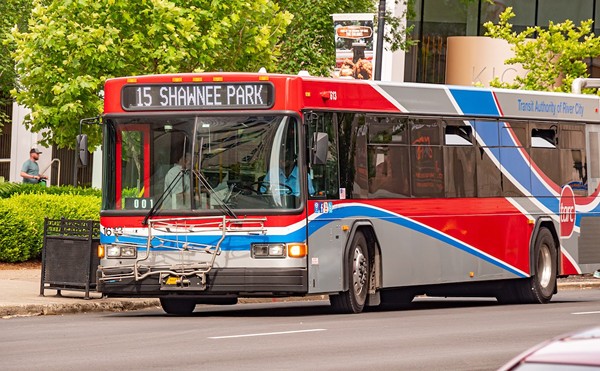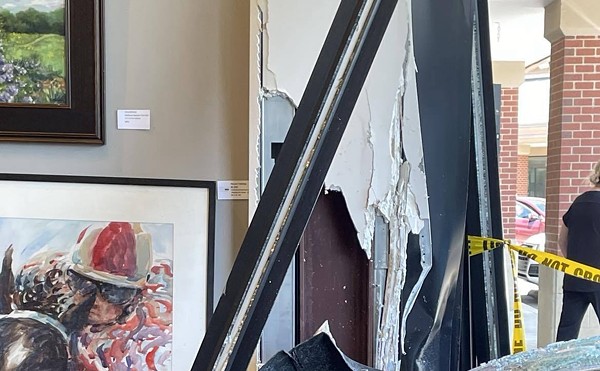Putting the one in every 1
Last week, the James Graham Brown Foundation got out its fat wallet and ponied up a sweet $1 million to support the local literacy program “Every 1 Reads.” Every 1 Reads trains volunteer tutors from the community to spend a half hour per week reading with Jefferson County Public School students. The program hopes to train 10,000 volunteers to tutor kids who read below their grade level, plus 2,000 more volunteers to work with high school students, in the hopes that all of the district’s 97,000 students will read at grade level and, one hopes, stop that annoying instant-messaging trend of spelling words with numerals. You know, like in “Every 1 Reads.”
Do you know how to read? (Hint: If you’re reading this, the answer is “yes.”) If so, you can help by visiting www.every1reads.com and signing up to volunteer. Training sessions are going on all the time, all around Louisville. Not only is it a rewarding and enjoyable way to volunteer, but you might help some kid grow up and explain to JCPS and local officials how to spell “everyone.” —Jim Welp
Greater Louisville Project: Eight is great!
Ranked among 14 peer cities in terms of citizens with higher education and median family income, Louisville has leaped from 12 to eight. There are more people here now with college degrees than two years ago. Property values are going up in many parts of the city. Though slight, the number of “21st century jobs,” or “knowledge jobs,” or those for which you’ll need a college degree, has continued to eek its way up the meter.
What does that mean?
Well, it’s damn good fodder for cheerleading, as well as a legitimate strike against backwardness. Additionally, it means the second biennial report of the Greater Louisville Project — the 2007 Competitive City Report — is out, and it’s pretty hot, if you ignore the turtle’s pace at which our economy seems to be turning the corner into this century and the ugly, ugly figures on housing (African-American homeownership is down, while white ownership is up, which follows a trend established here in 2000).
The Greater Louisville Project is a nonprofit initiative funded by a consortium of local organizations. To read the full report, as well as the 2005 Competitive City Report, hit up www.greaterlouisvilleproject.org. —Stephen George
Turning the river green
Wouldn’t it be great if somebody sailed in and offered to tidy up your place for free? For the second year in a row, Louisville’s getting the next best thing. Chad Pregracke, president and founder of Living Lands and Waters — and unabashed funnyman — will speak at 7 p.m. tomorrow night at the Clifton Center. He’ll discuss the nationally recognized organization he started 10 years ago, when he was just 22 years old. Its upcoming projects will include parking its 150-foot barge on the Ohio River for a month of river clean-ups and education here in town. —Jennifer Oladipo
Damn that traffic jam
A new study shows that children who live near a major highway are more likely to develop asthma and other respiratory diseases than kids who don’t. No big shocker there. Anyone who’s ever had to change a tire on the interstate can tell you that trying to breathe there is like trying to inhale inside one of Tommy Chong’s lungs.
But the University of Southern California study also showed that living within a third of a mile of a freeway substantially stunted the actual lung development of children. And proximity is a huge factor: Children 18 years old who’d lived near the freeway since age 10 had substantially reduced lung capacity compared with children who lived only a few hundred meters farther away. Because kids’ lungs are typically finished growing by age 18, the reduced capacity is probably lifelong and increases the likelihood for heart disease, emphysema, bronchitis, asthma and the chances that they’ll break into a wet, hacking cough trying to yell over the highway noise.
USC found similar results in 2004 when a study showed that teenagers growing up in smoggy areas are five times more likely to have clinically low lung function compared with teens in low-pollution areas. And that’s before they even hit their prime smoking years. —Jim Welp
Dam the bad luck
Each January, it’s a local tradition to spill a massive amount of some harmful substance into the Ohio River from a barge. Last year’s pièce de résistance was 800,000 gallons of liquid asphalt. This year’s spill was a more-subtle 3,000 tons of liquid fertilizer (perhaps to encourage something to grow through a crack in the asphalt).
On Jan. 16, this year’s barge not only dumped its cargo but got stuck in a gate of the McAlpine Dam, where it has been toying with Army Corps of Engineers salvage crews ever since. When acetylene torches wouldn’t cut the barge free, the Corps decided to be a little less “Engineer” and a little more “Army” and blast the vessel free. KABLAMMY! The Corps blasted several 15-pound explosives, finally breaking the barge into two pieces. In a triumph of near-Iraq-War proportions, the Corps can boast that it no longer has a barge stuck in the McAlpine Dam. It has two. —Jim Welp
Immigration fees could jump way up
The U.S. Citizenship and Immigration Services is planning to modify its fee structure, as early as June of this year, to include a significant jump in fees for immigrants trying to live and work here. The fee for a green card, which all immigrants except refugees must pay for, will go up the most dramatically, from $305 to $905. The application fee for immigration to the United States would go from $400 to $665.
John Whitaker, of Kentucky Refugee Ministries, said the increases would hurt those trying to come here legitimately.
“I have a lot of clients that work hard to attain citizenship,” he said. “They have embraced their new country, and they want to be full members of society. I’m worried that the increase will be a huge economic barrier for them.”
The price hike includes more than two-dozen immigration forms, which potential immigrants must file annually until becoming citizens. The agency has said the increase in dollars generated by the new fee structure would help reduce the sometimes-long delays in processing applications.
The public comment period is currently open: e-mail [email protected] to register your thoughts. For more info, check out www.uscis.gov or Kentucky Refugee Ministries at www.kyrm.org. —Stephen George
Update your Strobe more frequently at The Lip: LEO’s News Blog at www.leoweekly.com. Contact the writers at [email protected]
City Strobe
[
{
"name": "GPT - Rectangle - Inline - Content",
"component": "15818221",
"insertPoint": "5th",
"startingPoint": "3",
"requiredCountToDisplay": "3",
"maxInsertions": 100
}
]





